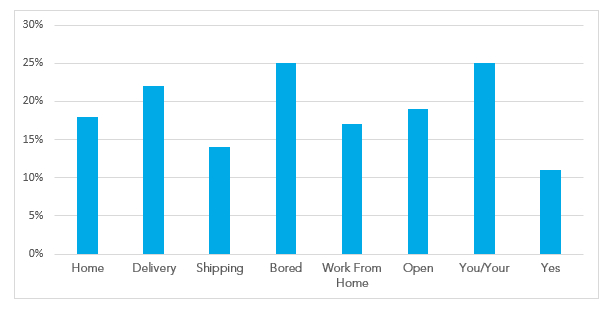In these unusual days of the COVID-19 era, email marketers across countless industries have suddenly found themselves asking the same questions.
- Should my campaigns still be active?
- What is okay to market? What isn’t?
- Is it appropriate to be marketing at all?
Best practices should be maintained in every marketing discipline even in times of crisis, so consistently applying email best practice should give you a strong indication of how to proceed. (Note that “proceed” is unquestionably the key term here: email engagement is actually increasing during the COVID-19 and its widespread fallout.)
Inevitably, the fine details of email best practice are subtly shifting as the pandemic progresses—as handily summarised by this Litmus webinar—but broad principles remain the same. Email continues to offer a personal, one-to-one communication relationship that other forms of marketing simply cannot match. That makes it a suitable medium to promote themes of community, support, and solidarity.
But alongside valuable information pertaining to changes in policy and business operations, recipients are also expecting a reassuring sense of “business as usual”. With that in mind, here’s our advice for your email marketing strategy as you pause to assess your upcoming campaigns.
-
Review your current programs
Start by auditing all your email triggers, especially those for long-running campaigns that are essentially on auto pilot. That “Go out and celebrate!” subject line triggered by a birthday event may have seemed evergreen at the time, but think about using a more sober alternative for the time being. Review each and every trigger to make sure content is appropriate for the current climate, and consider suspending some triggers entirely if the campaign itself strikes the wrong note.

While you’re at it, look over your upcoming production calendar. Flag any campaigns that may seem out of place or awkward, as they may need to be adjusted. An email themed around “summer-time fun”, for example, should become “backyard family fun” or something similarly sensitive to the new normal. Go over copy and content, check for out-of-place references, and inspect imagery closely. A stock photo of 10 friends huddled together at a sports event should be reconsidered!
-
Refine your targeting
Our Enterprise-to-Local strategies are built on the premise that where you are matters just as much as who you are. In times like these, location could not be more important for your email campaign targeting. Get this wrong and it could cost you valuable long-term relationships with customers.
To ensure your targeting is appropriate, make exceptions for the regions and demographics that have been hardest hit by recent global events. Be sensitive to areas and recipients that may need a different tone than others. There’s little doubt that sections of your lists will need to be either suppressed or supplied with alternative copy. If you’re able to keep your campaigns relevant and well targeted, one of the golden rules of email marketing—don’t over send—shouldn’t be an issue.
-
Be smart with your subject lines
People all over the world are becoming fatigued with the pandemic. For that reason, subject lines with direct mentions of “COVID-19”, “virus”, “coronavirus”, and related terms are becoming more likely to be ignored.
In contrast, there is a growing appetite for solutions to fill the voids that have resulted from various stay-at-home orders and recommendations. In B2C contexts, the following words are now increasing response rates:

-
Keep the conversation going
Even businesses that are temporarily closed—such as gyms and spas—should maintain regular communications with their audiences. Use email to not only ask customers what they need from you but to proactively address their concerns, whether they relate to refunds during lapses in service or how supply chains are being affected.
Many marketers are focusing on retention rather than sales, as Andrea Dearden of David Lloyd Leisure explained during our recent virtual round table. Keep customers apprised of plans for reopening, explain service adjustments to comply with our new everyday reality, and offer useful content (such as at-home workout plans) in the meantime.
Whatever else is going on in the world, don’t lose sight of the fact that relationships are like flowers: they need regular watering in order to grow. Keep the conversation going in an era that is reminding us how important community is—whether it’s family, friends, clients, or customers.
Does your email strategy need subtle optimisations or a complete overhaul? Our Content Strategy team helps brands make meaningful connections with the right people at the right time. As ever, it all starts with a friendly chat. Let’s talk.




